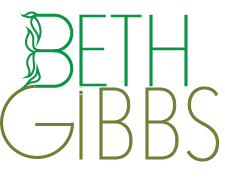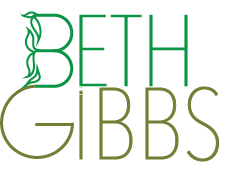ENLIGHTEN UP! a blogSelf-awareness stories: lighting our way to clarity, contentment and resilience in a complicated world.
|
 "Almost everything will work again if you unplug it for a few minutes...Including you." -- Anne Lamott Finding healthy productive ways to unplug is important during stressful, difficult times. The practice of conscious relaxation can do that for you. First: What does it mean to be conscious? That depends on who you ask and what level of being conscious you want to work on. Consciousness at its simplest is awareness of internal or external existence and experience. It is the most familiar, and yet the most mysterious aspect of our lives in earth school. To answer this question we have to look at the relationship between brain, mind, and consciousness. The brain is a visible, tangible part of the physical body. It weighs about 3.3 lbs. (1.5 kilograms), makes up about two percent of a human's body weight, and contains billions of nerve fibers, which are connected by trillions of synapses. The brain is the physical structure that explains how we think. During an autopsy, the brain can be seen, touched and dissected. The mind is the source of our thoughts, emotions and what we think and feel. It influences our view of the world, our actions, how we relate to ourselves, others and life in general. Your conscious mind is what you use when you pay attention to your physical body, its movement through space, your breath, the beating of your heart, awareness of bodily functions such as digestion and elimination and to notice changing energy levels throughout your day. Mind and consciousness are not physical. During an autopsy, mind and consciousness cannot be seen, touched or dissected. So the next question might be: “is consciousness in the mind or is the mind in consciousness?” Here’s my answer. If consciousness is limited to the mind, our focus is generally on the five-sense material world and WHAT we think, feel, and do. Here’s an example of this:
If we think of the mind being in consciousness – we can uncover material from the deeper levels of our consciousness to learn WHY we think, feel and act as we do. Here’s an example of that:
Next: What does it mean to relax? This is bit easier to define. Relaxation is a state of being free from tension and anxiety. It’s about resting your mind and body, an important aspect of self-care. Relaxation takes place on all layers of self-awareness. When we relax, our blood pressure, heart rate, digestive functioning, and hormonal levels shift toward balance. Our brain waves typically slow down, and we can experience a blissful state of well-being. How do consciousness and relaxation work together? Conscious relaxation allows you to remain awake and aware while relaxed in order to observe, understand, manage and integrate your experience. This awareness involves both the everyday mind and the Witness. Sometimes both are tuned in and sometimes the mind drifts but the Witness remains aware. This often happens during guided practices. How many times have you experienced something like, “My mind was floating off somewhere between here and wherever, but I heard every word in the practice!” If you are new to doing guided relaxation practices, or suffer from PTSD or trauma, look for one that keeps you firmly grounded in body and breath awareness. Before you begin, choose a technique such as a mental control that enables you to dial down any uncomfortable intensity, or a thick glass wall through which to watch what arises from a distance. At any time during the practice, it is your choice to continue or withdraw completely. Understand that you, not the instructor, are in control of your conscious relaxation experience. Suggested Practice for Conscious Relaxation: Rotation of Consciousness It can be helpful to record the practice on your phone or tablet and then play it back. If you don’t like the sound of your voice, ask a friend to do it for you. With practice you’ll be able to self-guide without digital aid. Instructions Find a comfortable position lying down or seated. Take a bring in out and begin. Bring awareness to the right side of your body and to the right hand, the fingers, palm of the hand, back of the hand, the wrist, the lower arm, the elbow, the upper arm, the shoulder, the armpit, the right waist, hip, thigh, kneecap, the calf muscle, the ankle, the heel, the sole of the right foot, the top of the foot, and all five toes. Bring awareness to the left side of your body and to the left hand, the fingers, palm of the hand, back of the hand, the wrist, the lower arm, the elbow, the upper arm, the shoulder, the armpit, the left waist, hip, thigh, kneecap, the calf muscle, ankle, heel, the sole of the left foot, the top of the foot, and all five toes. Bring awareness to the back of the body. Become aware of the right shoulder blade, the left shoulder blade, -- the right buttock, the left buttock, the spine and the whole back together. Pause. Bring awareness to the top of the head, to the forehead, the right eye, the left eye, the right ear, the left ear, the right cheek, the left cheek, the tip of the nose, the upper lip, the lower lip, the chin, the throat, the right shoulder, the left shoulder, the right hip, the left hip and the whole front of the torso. Allow awareness of the whole of the right leg, the whole of the left leg, and both legs together. Bring awareness to the whole of the right arm, the whole of the left arm, and both arms together. Bring awareness to the whole body, the whole body, the whole body together. Allow awareness of the whole body. See the whole body. Pause. Visualize this image in your mind. Allow the whole body to experience a relaxed state of awareness. Rest for as long as you like before slowly stretching and finishing the practice or drifting off to sleep. I made this video on conscious relaxation for a yoga group on Facebook. Hope you find it informative.
0 Comments
Your comment will be posted after it is approved.
Leave a Reply. |
Archives
July 2024
AuthorBETH GIBBS started her yoga practice in 1968, four months after her son was born and she’s been practicing ever since. She currently teaches all levels therapeutic yoga classes for adults, and specialty classes for seniors in the Hartford, Connecticut area. Beth is a certified yoga therapist through the International Association of Yoga Therapists and is guest faculty at the Kripalu School of Integrative Yoga Therapy. She writes for the blogs, Yoga for Healthy Aging, and Accessible Yoga. Her master’s degree from Lesley University in Cambridge, MA is in Yoga Therapy and Mind/Body Health. Categories |
|
|
Enlighten Up! a Blog
|
Copyright © 2023 Beth Gibbs

 RSS Feed
RSS Feed
